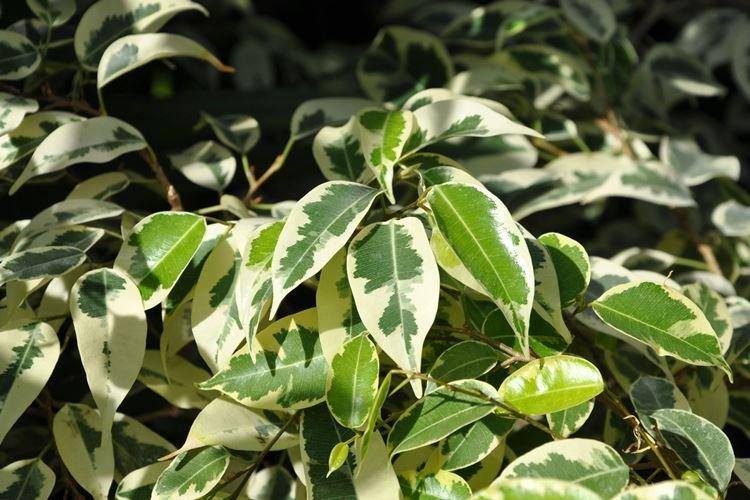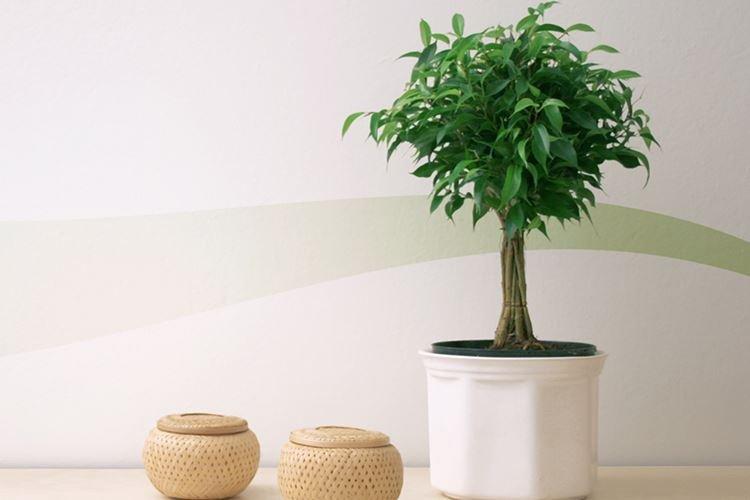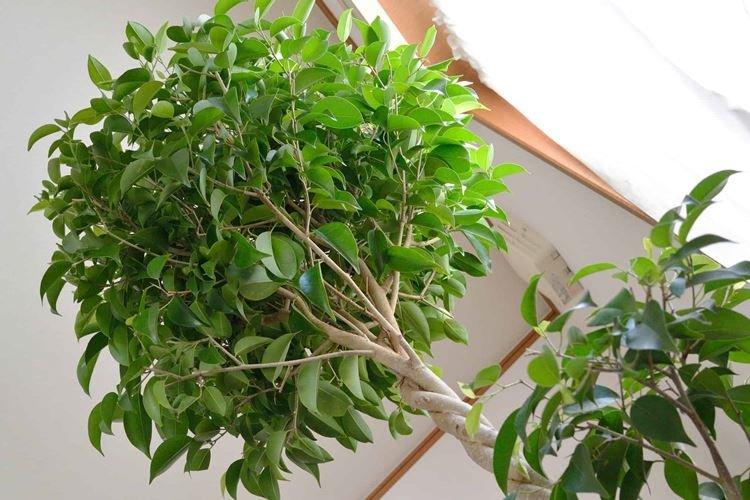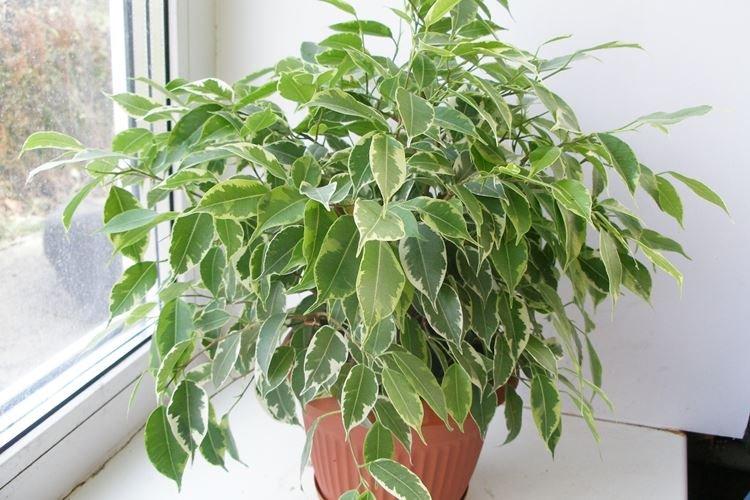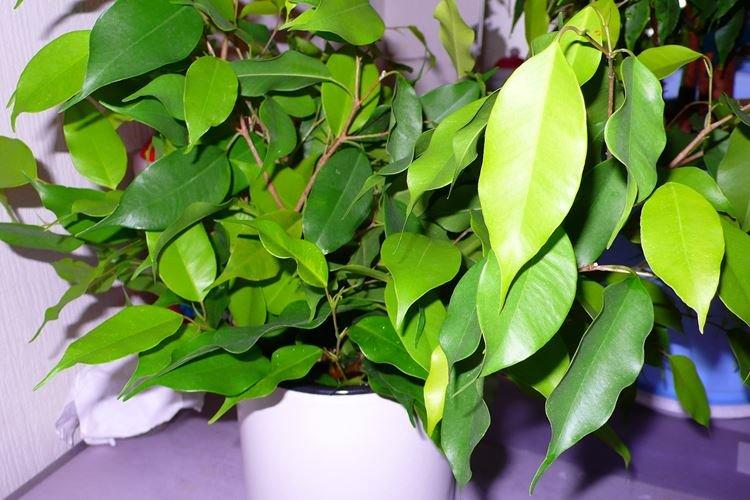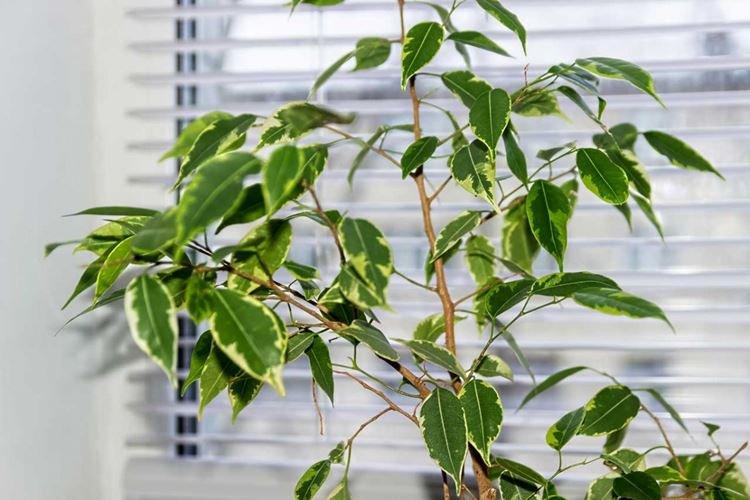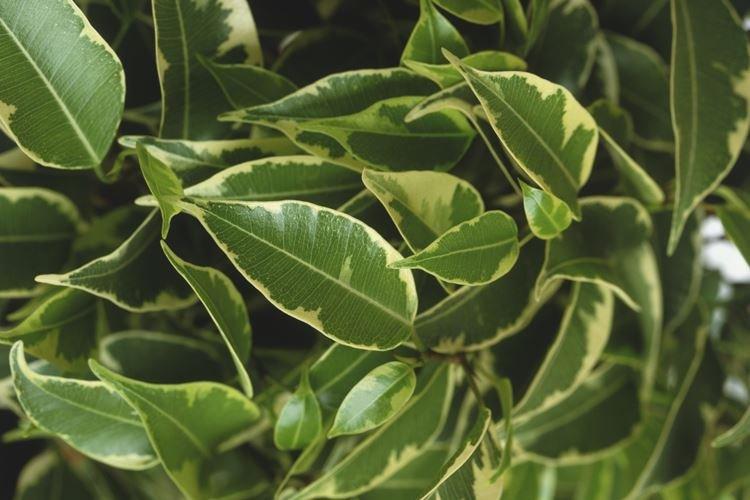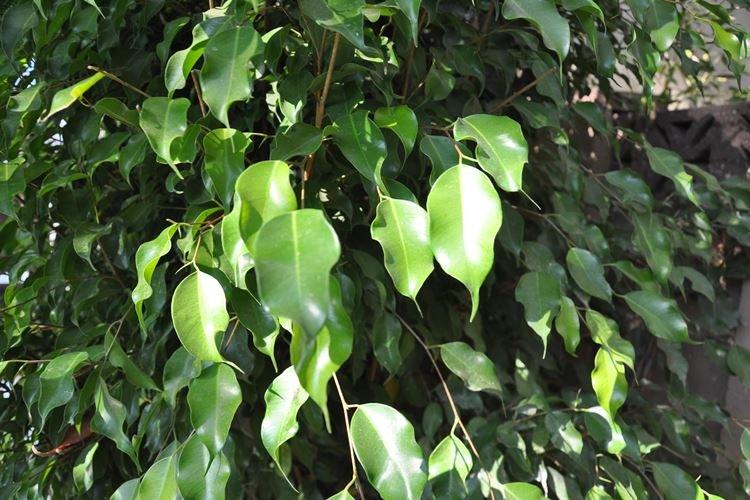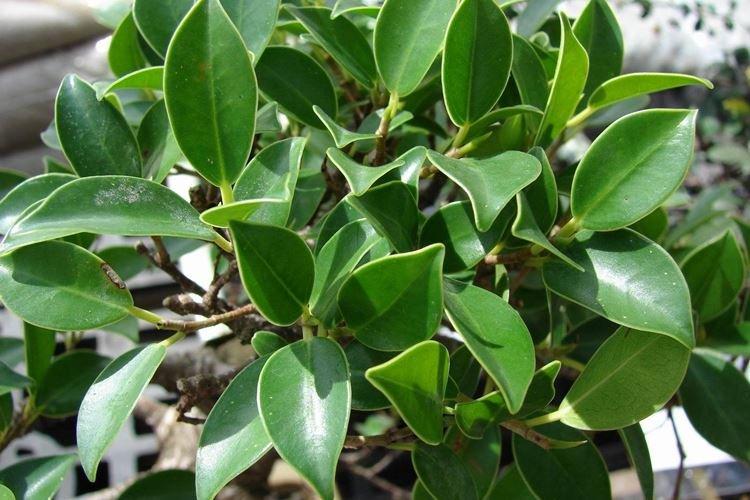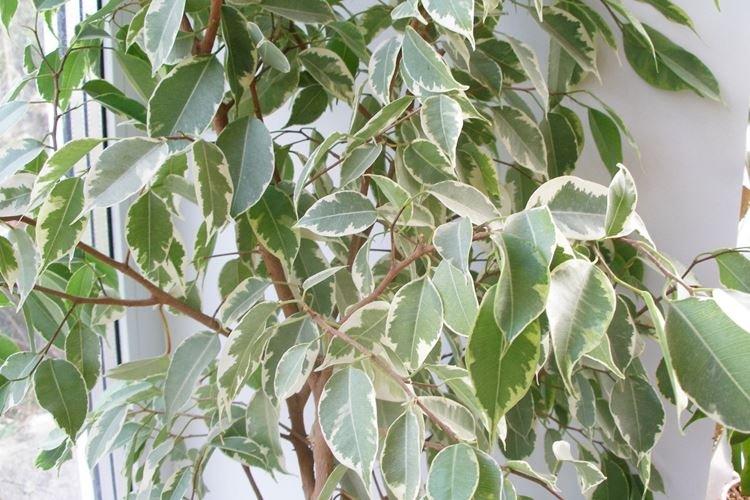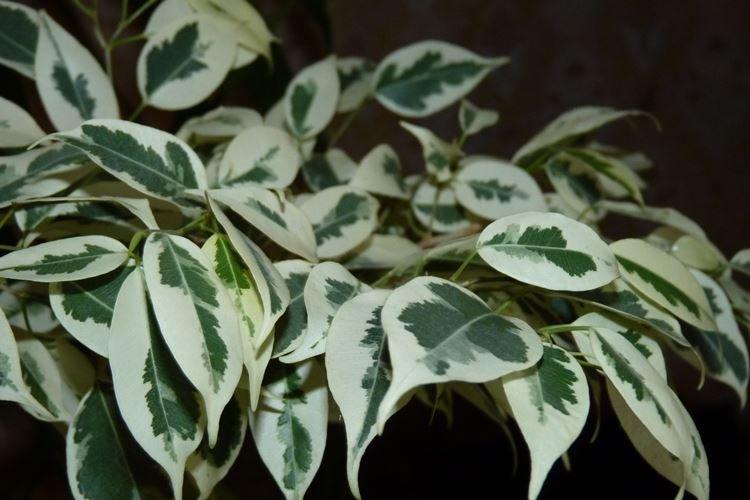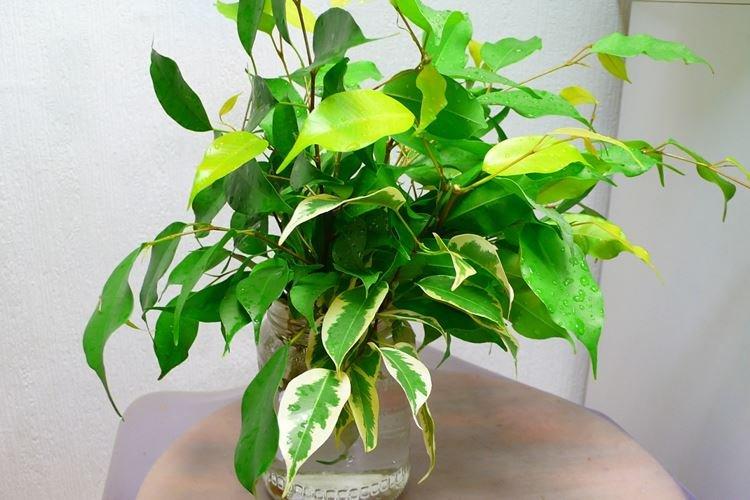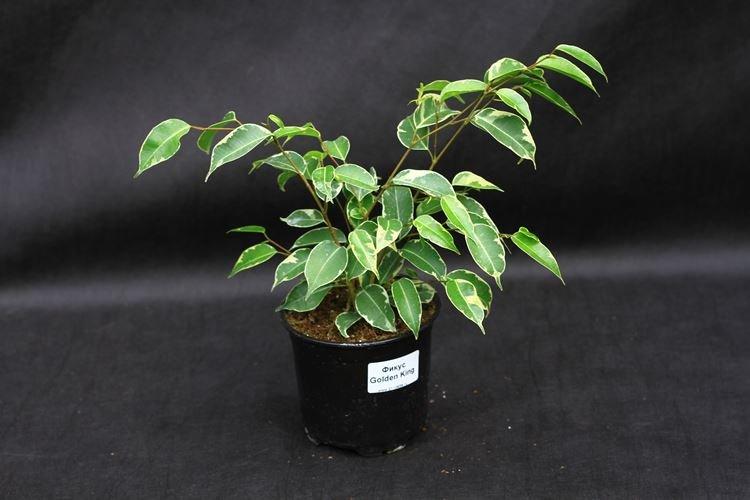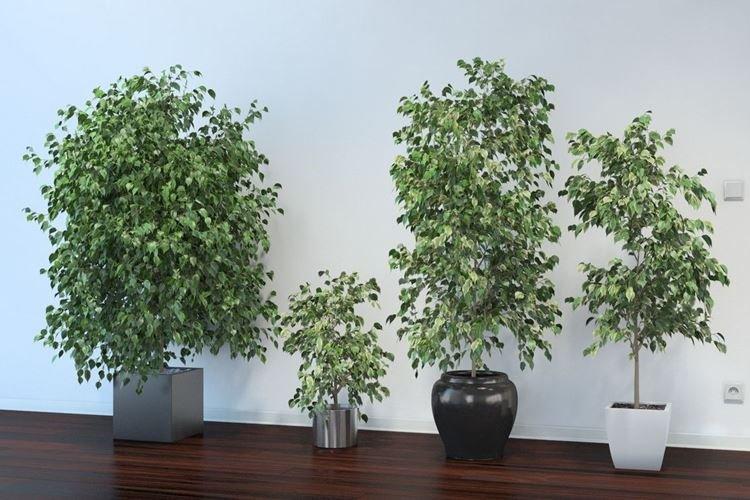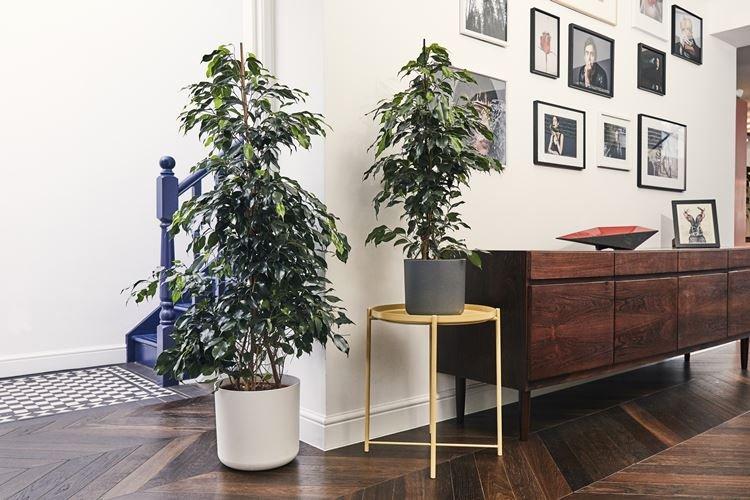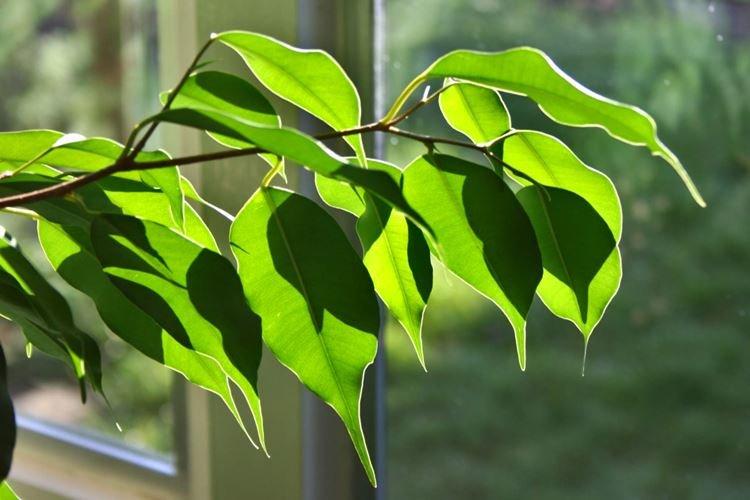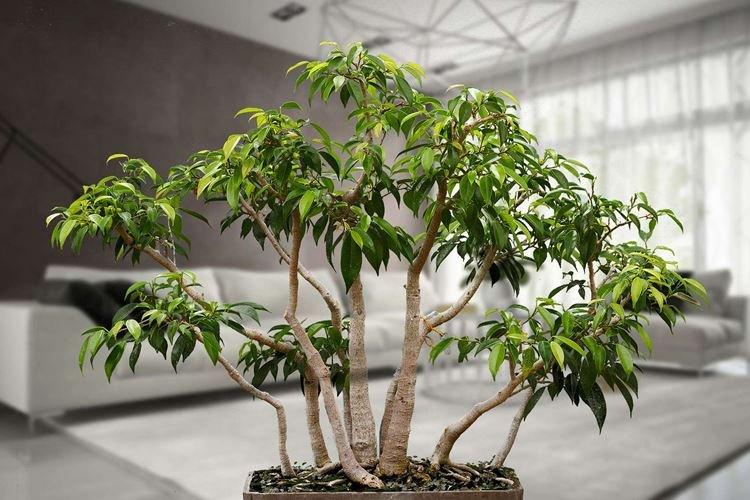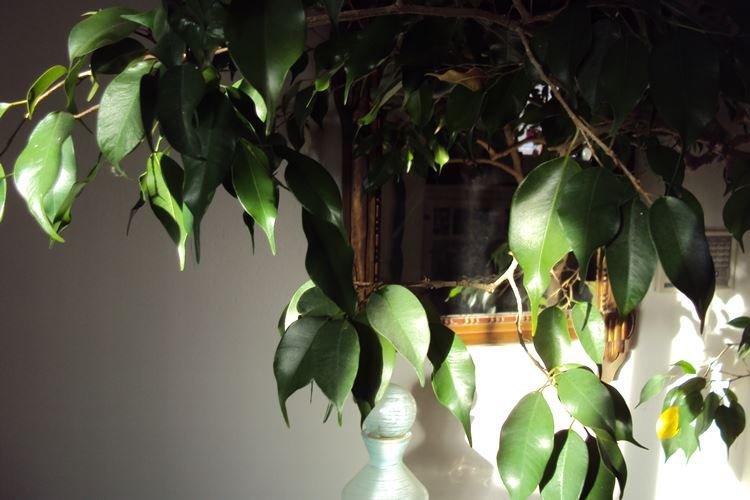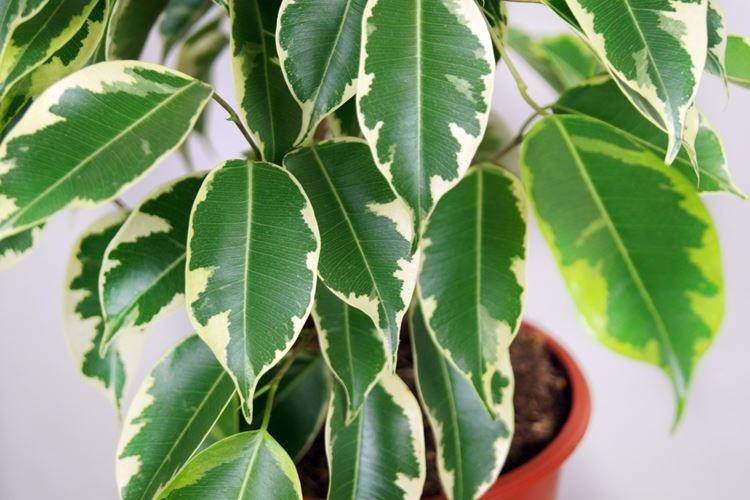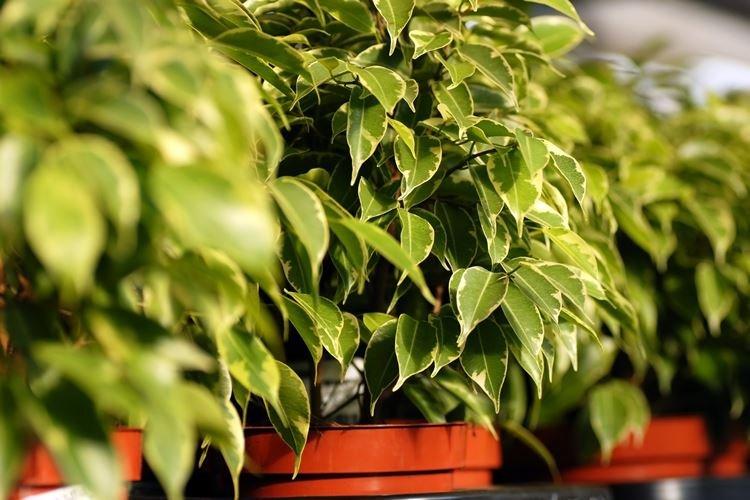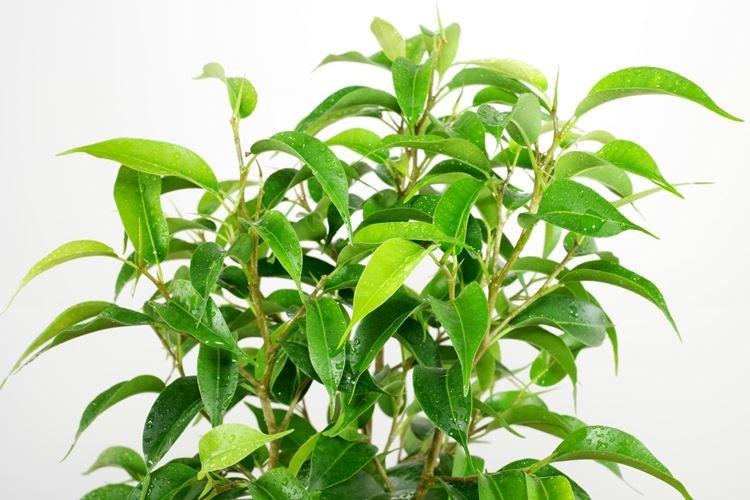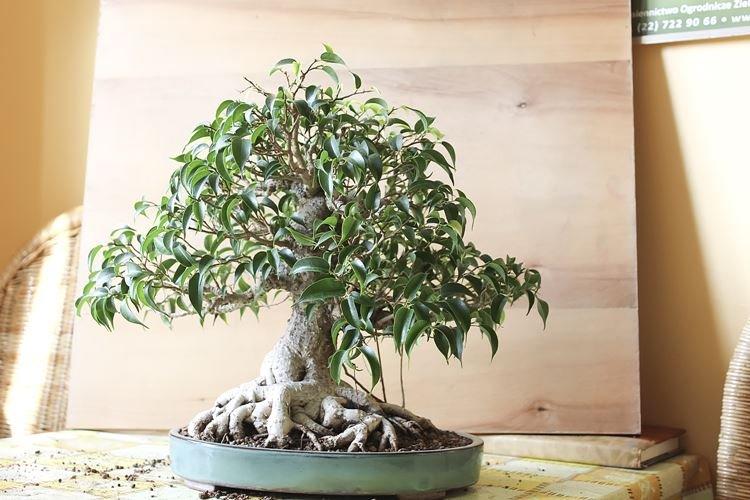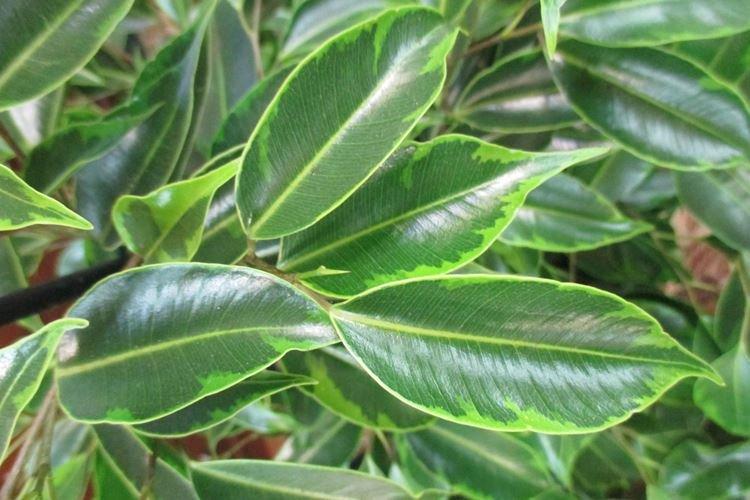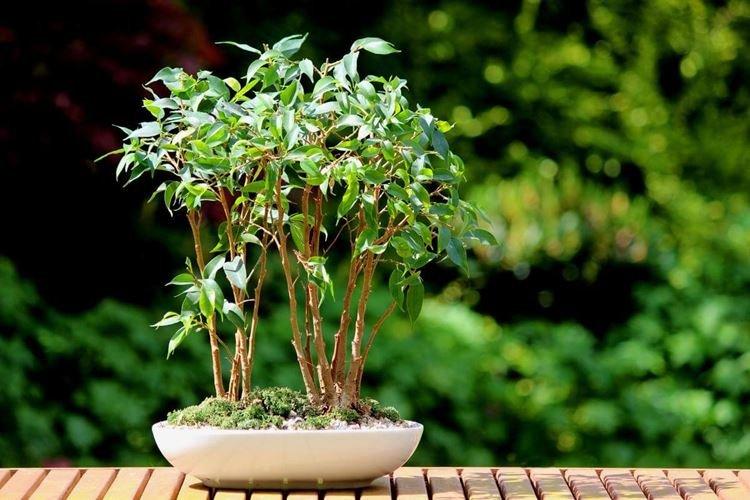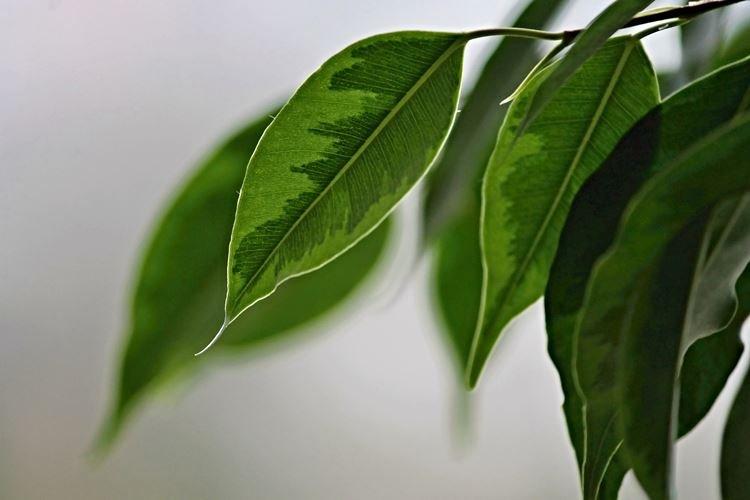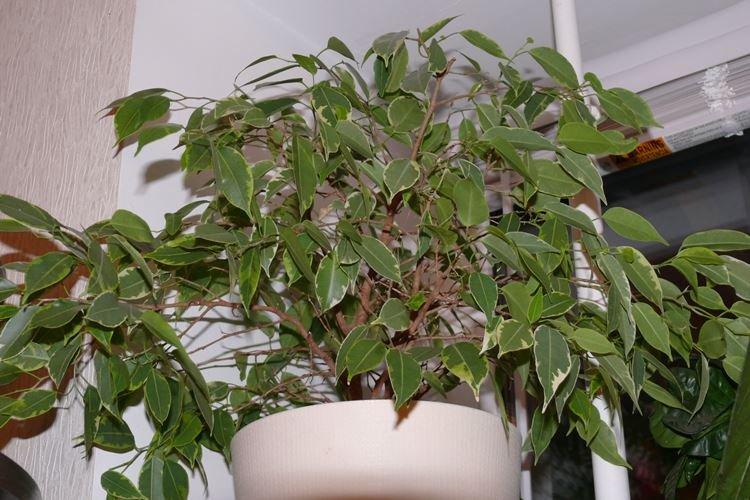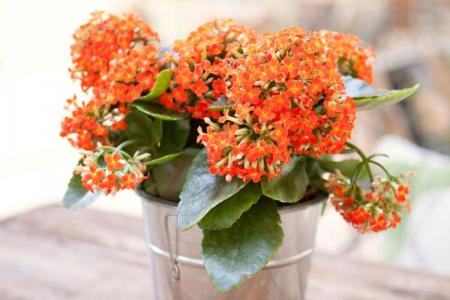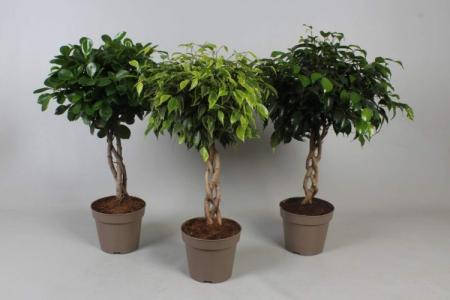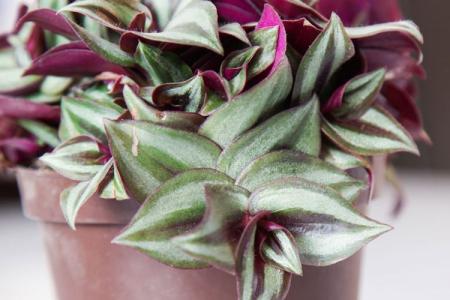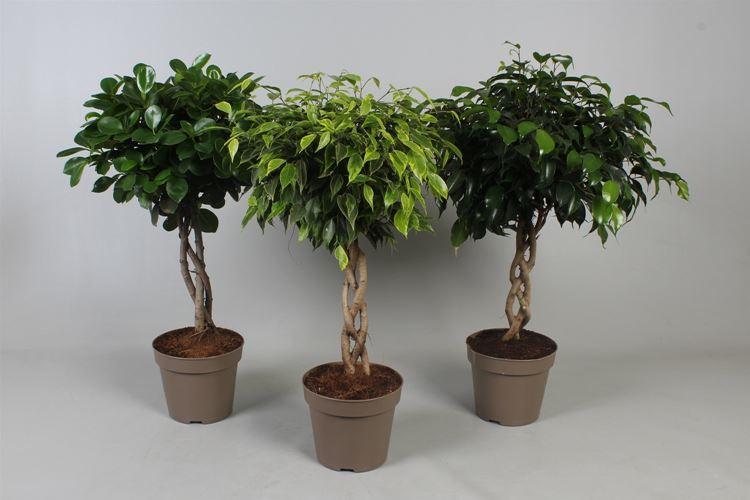
Among the capricious domestic plants, Benjamin's ficus occupies a separate place. Indeed, in any incomprehensible situation, a beautiful and lush tree instantly drops its leaves. But the belief is that if you treat a sensitive guest with care, the ficus will definitely bring happiness and health to the house! So why not give it a try?
general information
If you see a beautiful evergreen ficus in your house, this is probably Benjamin's ficus, because it is he who is the most popular in our latitudes. In warm countries and on islands, it lives in the wild and grows up to 20 m. From all sides, a huge plant releases air roots, which become additional support.
Even at home, Benjamin's ficus grows easily to the ceiling, so it is better to cut and shape it. Leathery leaves can be solid or spotted. They are relatively small, as for ficus - up to 10 cm, but there are a lot of them. Several cuttings are planted in one pot at once, which are then intertwined into one large and beautiful plant.
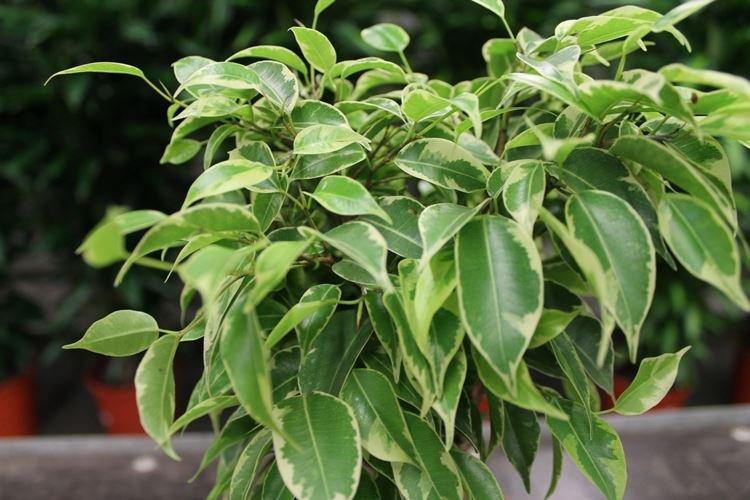
Ficus Benjamin varieties
Among themselves, the varieties differ in the shape and color of the leaves, so that you can collect a variegated and varied green corner from different Benjamin ficuses. Certain species are used in landscape design, but only in warm regions.
Ficus Benjamin "Starlight"
A popular ornamental variety, it has very variegated and slightly curved leaves. Large creamy and white spots are scattered over the green plates, and sometimes completely white leaves are found.
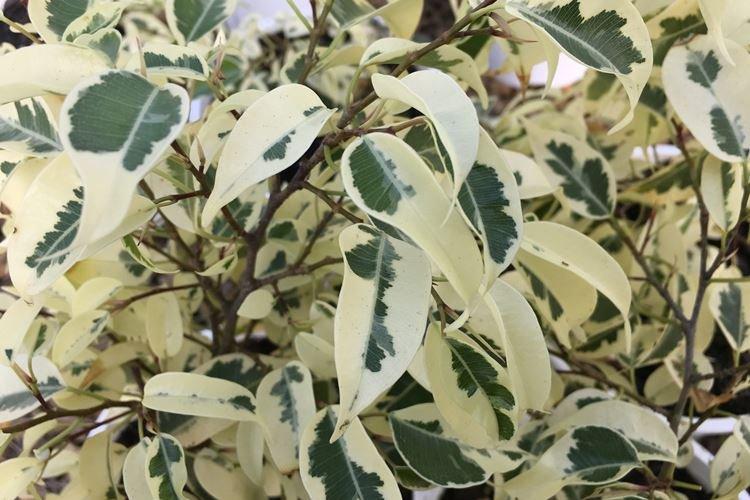
Ficus Benjamin "Exotic"
A very decorative and neat weeping variety with a green color on warm islands is used for urban landscaping. In the apartment, he is extremely unpretentious and grows even on the northern windows.
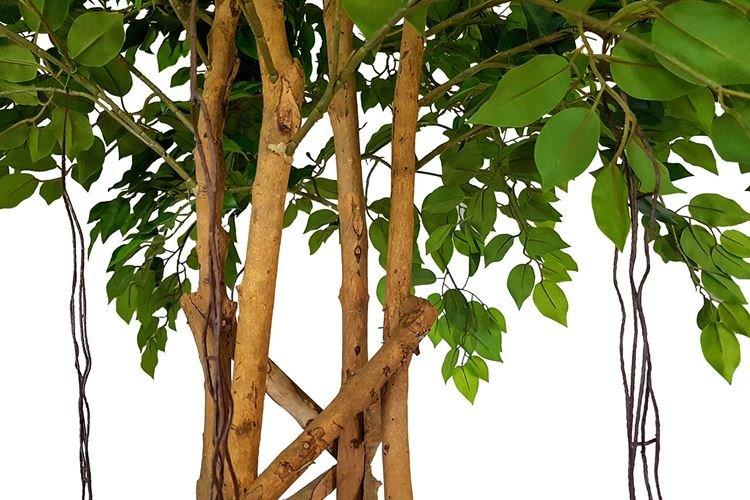
Ficus Benjamin "Kinky"
This is a compact variety that grows on average up to 40 cm on a windowsill. It has variegated small leaves, fancifully bordered along the entire contour. As they grow older, a small bush stretches into a neat tree.

Ficus Benjamin "Curley"
Each shoot is dotted with completely different leaves: straight, wavy and corrugated. There are dark and light, green and variegated, whitish and yellowish plates - very unusual.
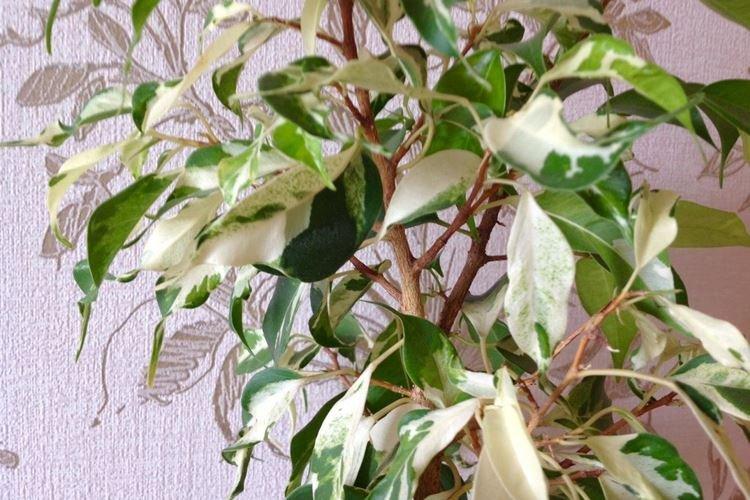
Ficus Benjamin "Baft"
If you need beautiful plain leaves up to 8 cm - the Baft variety is for you. A rich green with a shiny surface looks interesting in contrast to the yellowish edging. In the summer, such a Benjamin ficus grows even faster than usual.
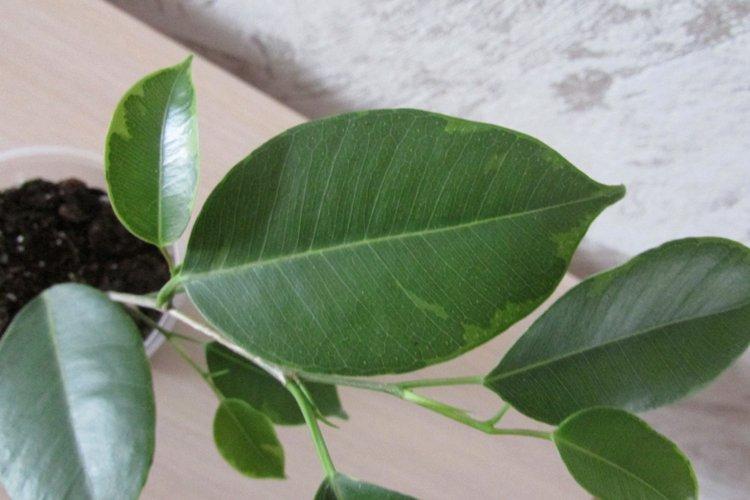
Ficus Benjamin "Viandy"
The peculiarity of the variety is a bizarre twisted trunk, but it is very fragile and requires careful handling. But if you wish, you can even twist it into a loop dotted with small green leaves up to 3 cm.
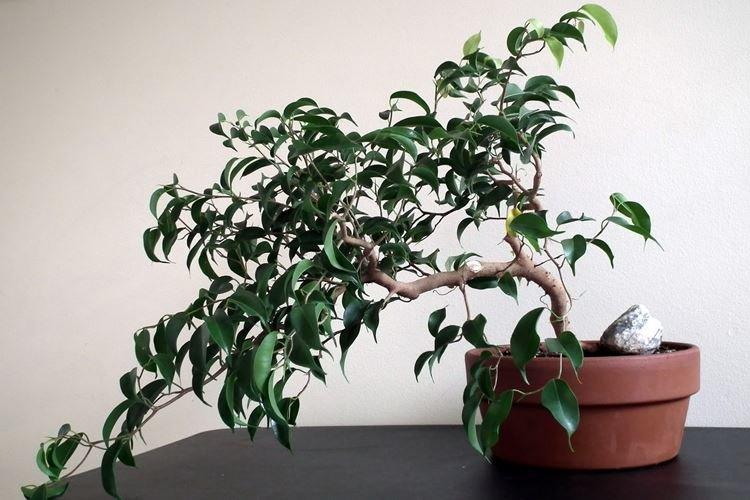
Benjamin Ficus Care
Any tropical plant needs appropriate conditions. In the first place, warmth and humidity, because without them, the leaves fade, dry and fall off. Variegated varieties are especially capricious in this regard.
Temperature
In summer, the thermophilic plant thrives at 18-25 degrees, although some variegated varieties like higher temperatures. You can take the pot out into the yard or on the balcony. In winter, choose a cool corner in the room, but make sure that the temperature is not below 16 degrees.
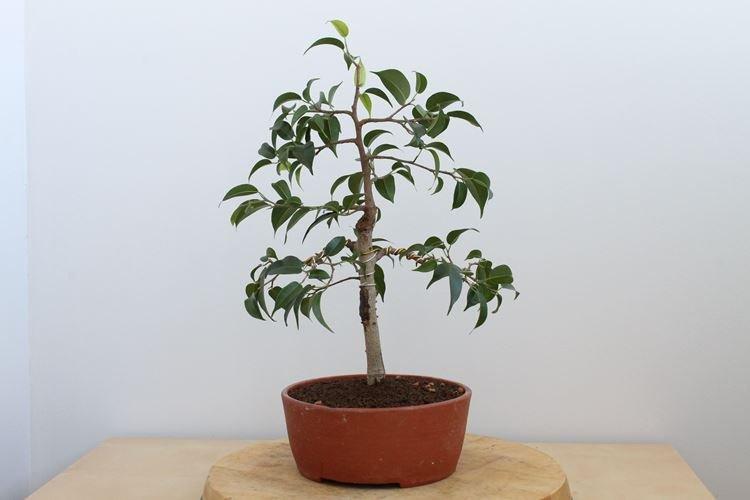
Lighting
Ficus needs a lot of diffused light near the east or west windows. Otherwise, it will have to be shaded or set aside further into the room. In winter or just at will, you can use phytolamps.
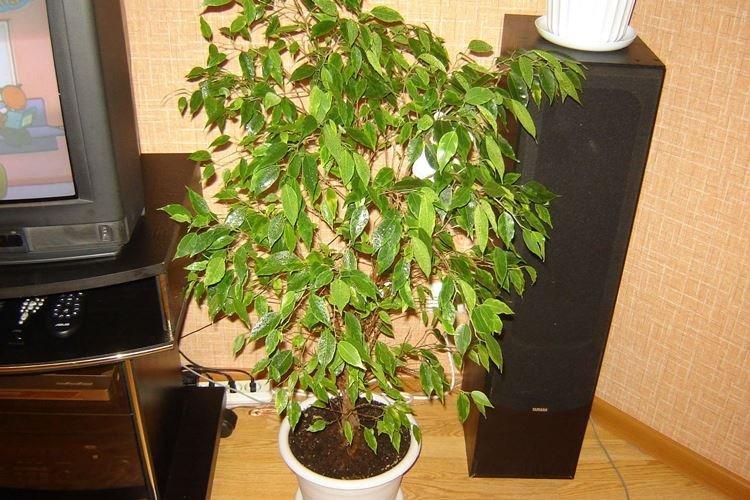
Watering
Take settled water for a couple of days, be sure - warmed up even to temperature. The frequency depends on the rate of drying of the substrate, because Benjamin's ficus reacts poorly to both overfilling and underfilling. Check with a stick so that the soil has time to dry out by 3-4 cm. In the summer, add a humidifier, wet expanded clay, spraying and a warm shower.
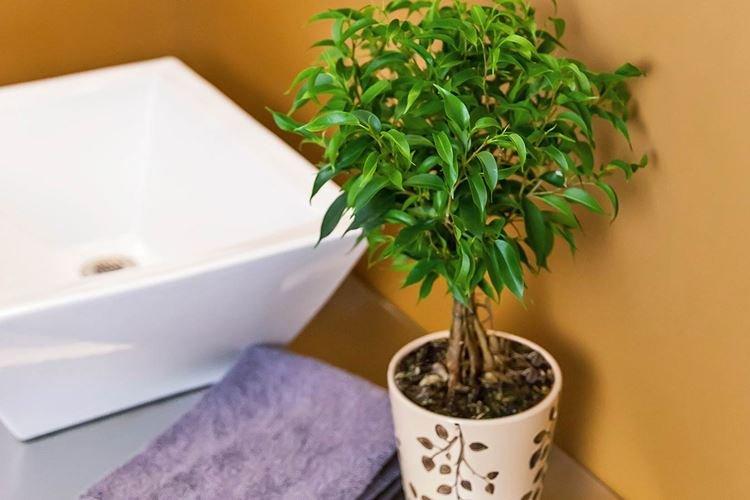
The soil
Ficusu grows best in neutral soil, although the composition may vary. For example, add peat and charcoal to the storey universal soil for the structure. The pot must have drainage holes and a good layer of expanded clay so that the roots do not rot.
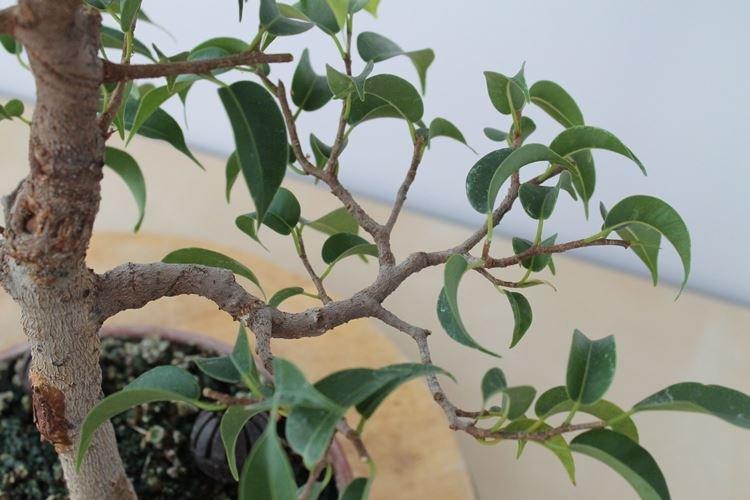
Fertilizers and feeding
Ficus is actively growing, so it needs nitrogen and complex fertilizers. You can alternate organic and mineral mixtures, watering with additives, root and foliar feeding. Start in March and complete the entire procedure by October at intervals of up to three weeks.
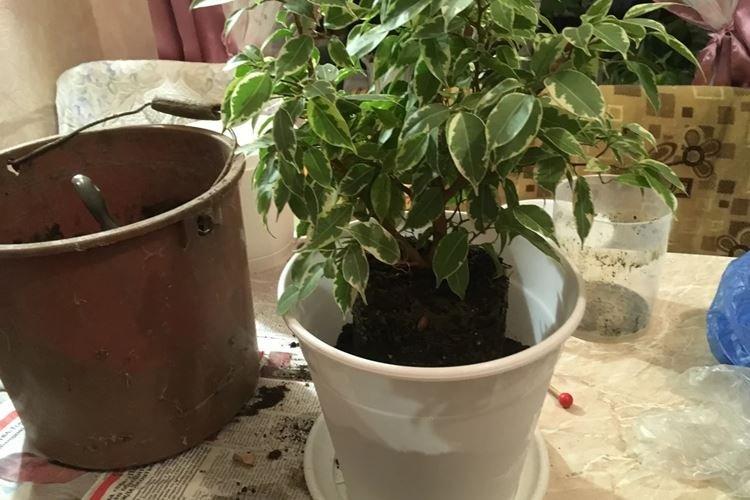
Transplant and reproduction
Young ficus will have to be replanted annually, because it grows rapidly. Choose a flowerpot a couple of centimeters larger and transplant the plant using the transshipment method. Ficuses from 7 years old live in one pot for 2-3 years, until the roots begin to peep out from above or into the drainage holes. And from 12 years old, it is enough to change a couple of centimeters of the substrate from above so that the soil is not depleted.
Ficus Benjamin is propagated by cuttings from adult semi-lignified branches with 4-6 leaves. Rinse the cut, remove the fungus and leave it in water or a light substrate under the film for a couple of weeks. As soon as the roots get stronger, transplant the cutting into a pot and gradually remove it from the "greenhouse".
Old ficuses can be propagated by layering from strong lignified shoots. Make a small ring cut in the bark and peel off the top layer slightly. Treat with a growth stimulant, wrap with sphagnum and hide under a film until roots appear.
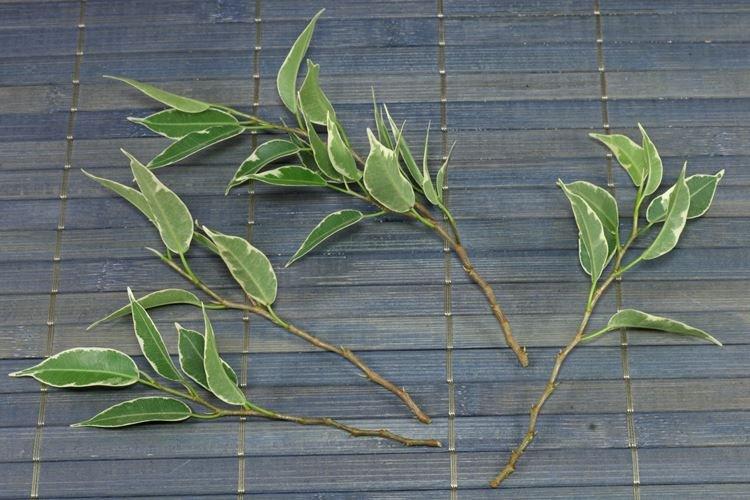
Pruning
Ficus Benjamin grows very quickly, so it needs to be regularly shortened and thinned out. In early spring, remove the longest branches, weak shoots, and anything that grows inward. If desired, the plant can be formed - into a ball or a cone. Individual small branches can be removed or pinched until September.
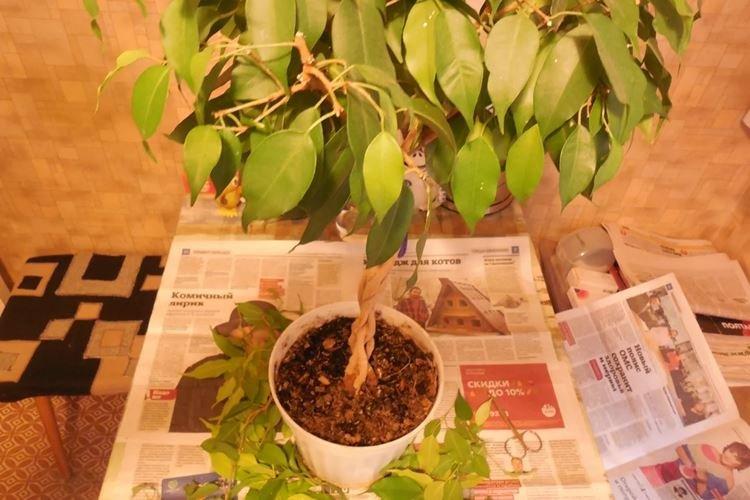
Pest and disease control
Due to the regular waterlogging of the soil and a lack of oxygen, root rot develops and the ficus quickly turns yellow, and then darkens and dies. The plant must be removed from the flowerpot, carefully inspected the roots, cut off the damaged parts, dried and transplanted.
If the leaves become covered with chaotic and uneven spots, treat the ficus with fungicides and adjust the care. It can be anthracnose, cercosporosis and several other unpleasant fungal diseases.
The main pests of ficus are the scale insect, which feeds on sap, and the spider mite, as if leaving a white bloom. There is also a mealybug, but it's easiest to spot in the early stages. The body of the parasite is covered with cotton wool, so that it stands out on green leaves. In all cases, you need to thoroughly rinse the leaves with soapy water, and if this is not enough, use insecticides.
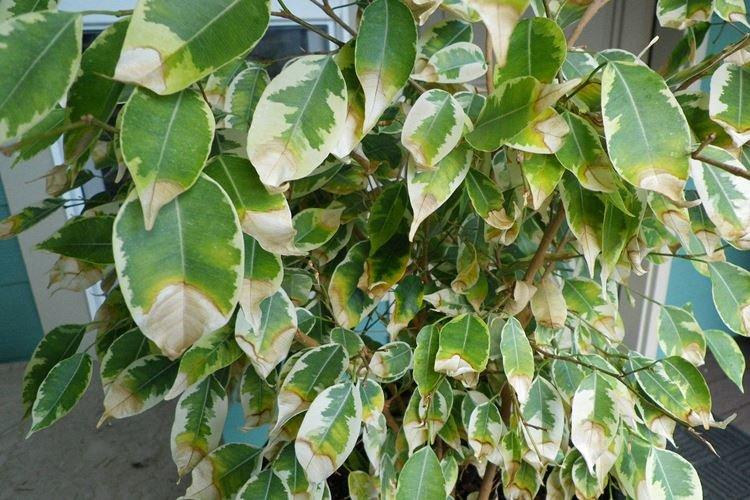
Ficus Benjamin - photo
Benjamin's indoor ficus can be completely different - from a small neat flowerpot on the windowsill to a huge spreading tree. Look, what a beauty!
